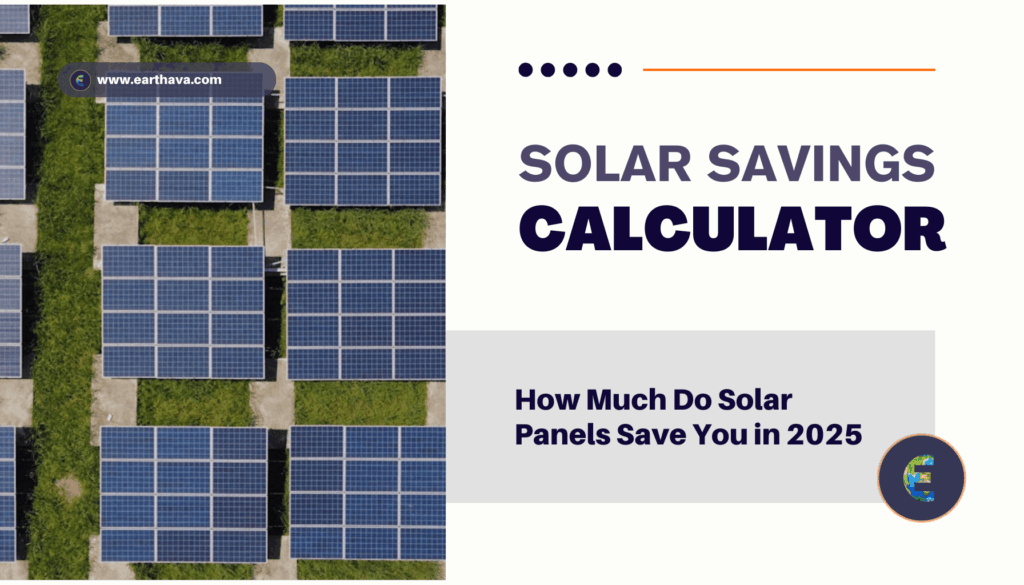As we continue to navigate the complexities of energy consumption and environmental sustainability, a pressing question arises: Can installing solar panels on your home significantly reduce your energy bills in 2025? With the rising costs of electricity and the growing emphasis on renewable energy sources, homeowners are increasingly turning to solar panels as a viable solution.

We are witnessing a significant shift towards solar energy, driven by advancements in technology and a decrease in the upfront cost of solar panel installation. In 2025, the potential savings from solar panels are more substantial than ever, influenced by factors such as local electricity rates, available incentives, and your home’s energy consumption patterns.
As we explore the benefits of solar panels, it’s essential to understand how they can offset your monthly electricity bills and contribute to a more sustainable future.
Key Takeaways
- Homeowners can significantly reduce their energy costs by installing solar panels in 2025.
- The savings from solar panels depend on several factors, including system costs and local electricity rates.
- Advancements in solar panel technology have improved efficiency and potentially offer greater savings.
- Various financing options and incentives make solar panels more accessible to homeowners.
- Understanding your home’s energy consumption patterns is crucial to maximizing solar panel savings.
Understanding Solar Panel Savings in 2025
As we explore the benefits of solar energy in 2025, understanding the potential savings is crucial. Solar panel savings vary significantly across different regions due to factors like sunlight availability, electricity costs, and local incentive programs.
Key Factors That Determine Your Solar Savings
Several key factors determine the solar savings for a household. These include the amount of sunlight your location receives, the cost of electricity in your area, and the specifications of your solar panel system.
The average home in the U.S. consumes around 881 kilowatt-hours (kWh) per month. Energy bill savings will always be relative to the costs of electricity in your region.
Average Solar Savings Across the United States
Solar savings vary across the United States. Western states like California and Arizona see high solar savings due to abundant sunshine and high electricity rates. Northeastern states also show strong savings despite less sunlight, due to higher electricity costs.
The average American household can expect to save between $25,000 and $50,000 over the system’s lifetime, depending on their location and system specifications.
| Region | Average Annual Savings | Lifetime Savings (25 years) |
|---|---|---|
| Western States | $1,200 | $30,000 |
| Northeastern States | $1,500 | $37,500 |
| Southern States | $1,000 | $25,000 |
Using a Solar Savings Calculator to Estimate Your Benefits
Understanding your potential solar savings begins with utilizing a reliable solar savings calculator. This tool allows homeowners to estimate their energy savings and make informed decisions about switching to solar energy.

How Solar Calculators Work
Solar calculators work by analyzing various factors that affect your energy consumption and potential solar savings. These factors include your current electricity rate, monthly electricity consumption, and the specifics of your roof’s size and orientation. By processing this information, a solar calculator can provide a detailed estimate of your potential savings.
The process begins with inputting your average monthly electricity bill and current electricity rate. The calculator then uses this data to determine how much energy you consume and how much you can save by switching to solar energy. Additionally, the calculator takes into account your location’s sun exposure and local incentives, such as tax credits or rebates, to provide a comprehensive analysis.
What Information Do You Need to Get Accurate Results
To get accurate results from a solar savings calculator, you must provide specific information about your energy usage and home characteristics. This includes your monthly electricity consumption in kWh, your current electricity rate, and details about your roof’s size, orientation, and shading issues.
Some key data points to gather include:
– Your actual electricity usage data from 12 consecutive months of utility bills
– Your current electricity rate structure, including any time-of-use rates
– Information about your roof’s size, orientation, pitch, and shading
– Your zip code or precise address for location-specific data
– Details about any local incentives or net metering policies
By providing this information, you can ensure that the solar savings calculator gives you a precise estimate of your potential savings, helping you make a well-informed decision about investing in solar energy.
Calculating Your Potential Solar Panel Savings
Calculating your potential solar panel savings is a straightforward process that can help you make the most of your investment. To get an accurate estimate, we need to consider several factors that influence your energy production and consumption.
Step-by-Step Method to Calculate Monthly Savings
To calculate your monthly savings, start by determining your average monthly energy consumption in kWh. Then, estimate the total energy production of your solar panel system based on its size and your location’s solar irradiance. For instance, a typical residential solar panel system in the United States produces around 900 kWh per month. If your energy consumption is 1,000 kWh per month, and your solar panels produce 900 kWh, you’ll still need to consume 100 kWh from the grid or use stored energy. By comparing your energy production to your consumption, you can estimate your monthly savings based on your utility rate. For example, if your utility rate is $0.15 per kWh, and you produce 900 kWh, that’s a savings of $135 per month.
Estimating Lifetime Energy Cost Savings
When estimating lifetime energy cost savings, we must consider the long-term performance of our solar panel system. Most quality solar panels come with a 25-year warranty and are expected to produce energy at a significant level throughout their lifespan. Over 25 years, your solar panels can save you an average of $40,725 in electric bill savings. To accurately estimate lifetime savings, factor in the gradual degradation of solar panels (typically 0.5% per year), projected utility rate increases (historically 2-5% annually), and potential increases in home value (typically 4-6% for homes with owned solar systems).
By considering these factors, we can get a comprehensive picture of our long-term savings. Additionally, the protection against utility rate volatility provides financial stability beyond the raw savings numbers, making solar energy an even more attractive option.
Factors Affecting Your Solar Panel Payback Period
As you evaluate solar energy for your home, several key factors will impact how quickly your solar panels pay for themselves. Understanding these elements is crucial for making an informed decision about your solar investment.
Understanding Solar System Costs
The initial cost of your solar system is a significant factor in determining your payback period. This includes the price of the solar panels, installation costs, and any additional equipment required. The average cost of solar panels has decreased over the years, making solar energy more accessible. However, the total system cost can vary depending on your location, the size of your system, and the installer’s pricing.
Impact of Location and Sun Exposure
Your location and the amount of sun exposure your solar panels receive play a critical role in their efficiency and, consequently, your energy savings. Areas with more sunlight throughout the year will generally have shorter payback periods. Additionally, the orientation and angle of your solar panels can impact their ability to generate electricity.
How Utility Rates Influence Your Savings
Utility rates significantly affect your solar panel savings. Higher electricity rates mean that the energy produced by your solar panels is more valuable, leading to greater savings on your electric bill. It’s also important to consider the utility company’s net metering policy, which determines how much credit you receive for excess kWh produced by your system.
- Higher utility electricity rates create greater potential savings from solar.
- Time-of-use rate structures can significantly impact solar savings.
- Understanding your utility’s rate structure is essential for accurate savings calculations.
Solar Financing Options and Their Effect on Savings

To fully leverage the cost-saving potential of solar energy, it’s essential to explore the different financing options available to homeowners in 2025. The choice of financing can significantly impact the overall cost of your solar panel system and the savings you can achieve.
Cash Purchase vs. Solar Loans
Paying cash upfront for solar panels can provide the highest long-term savings, as it eliminates interest payments associated with loans. However, not all homeowners have the capital to make a cash purchase. Solar loans offer an alternative, allowing homeowners to spread the cost over several years. These loans often come with competitive interest rates, making solar energy more accessible.
Solar Leases and Power Purchase Agreements
Solar leases and Power Purchase Agreements (PPAs) provide another financing route, where a third-party owner installs and maintains the solar panels. Homeowners then pay a monthly fee to use the energy generated. While these options require little to no upfront costs, they may not offer the same level of savings as owning the system outright.
Federal and State Incentives for 2025
In 2025, various federal and state incentives can significantly reduce the cost of solar panels. The federal solar investment tax credit (ITC) remains at 30% through 2032, allowing homeowners to deduct a substantial portion of their solar installation costs from their federal taxes. Additionally, many states offer their own incentives, such as property tax exemptions, sales tax exemptions, and rebate programs.
| Incentive Type | Description | Potential Savings |
|---|---|---|
| Federal Tax Credit | 30% of solar installation costs | Up to $9,000 for a $30,000 system |
| State Rebates | Varies by state | Up to $5,000 |
| Property Tax Exemptions | Exempts solar equipment from property taxes | Varies by location |
By understanding and leveraging these financing options and incentives, homeowners can significantly reduce the upfront cost of solar panels and enhance their overall savings. Exploring all available options and incentives is crucial to maximizing the financial benefits of going solar.
Conclusion: Maximizing Your Solar Investment in 2025
To fully benefit from solar energy, it’s essential to plan our solar investment in 2025 strategically. With most solar panel systems having a 25-year warranted lifetime, a 10-year payback period means we can enjoy 15 or more years of free, renewable energy, providing significant net savings.
Maximizing our solar investment involves several key considerations. Battery storage is becoming increasingly important as net metering policies evolve. Proper system sizing, regular maintenance, and staying informed about new developments are also crucial. By taking these factors into account, we can optimize our energy production and financial returns.
The environmental benefits of solar power complement the financial savings, with the average residential system offsetting approximately 100 tons of carbon dioxide over its lifetime. With proper planning and implementation, solar panels remain one of the few home improvements that pay for themselves multiple times over while providing energy independence and environmental benefits.
FAQ
How do I determine the right size of a solar panel system for my home?
To determine the right size, we consider your average daily energy consumption, available roof space, and the amount of sunlight your location receives. A typical residential system ranges from 3 to 8 kilowatts.
What is the average payback period for a home solar panel installation?
The payback period varies depending on the initial cost, available incentives, and your energy usage. On average, homeowners can expect to break even within 7 to 10 years.
How do utility rates affect my energy bill savings?
Higher utility rates result in greater savings with solar panels. As electricity prices rise, the value of the energy produced by your solar panel system increases, leading to more significant reductions in your energy bills.
Can I still benefit from solar energy if I have a shaded roof?
While shading can impact the efficiency of your solar panels, it’s not a deal-breaker. We can assess your roof’s condition and explore options like panel placement or micro-inverters to optimize energy production.
What are the available financing options for solar panel installations?
We offer various financing options, including cash purchases, solar loans, and leases. Each has its benefits, and we can help you determine the best choice based on your financial situation and goals.
How do federal and state incentives impact my solar investment?
Incentives like the federal tax credit and state-specific programs can significantly reduce the upfront cost of your solar panel system, making it more affordable and increasing your overall savings.
Will I need to replace my battery storage system over time?
Most battery storage systems come with a 10 to 15-year warranty and are designed to last. While they may eventually need replacement, advancements in technology are continually improving their durability and lifespan.


